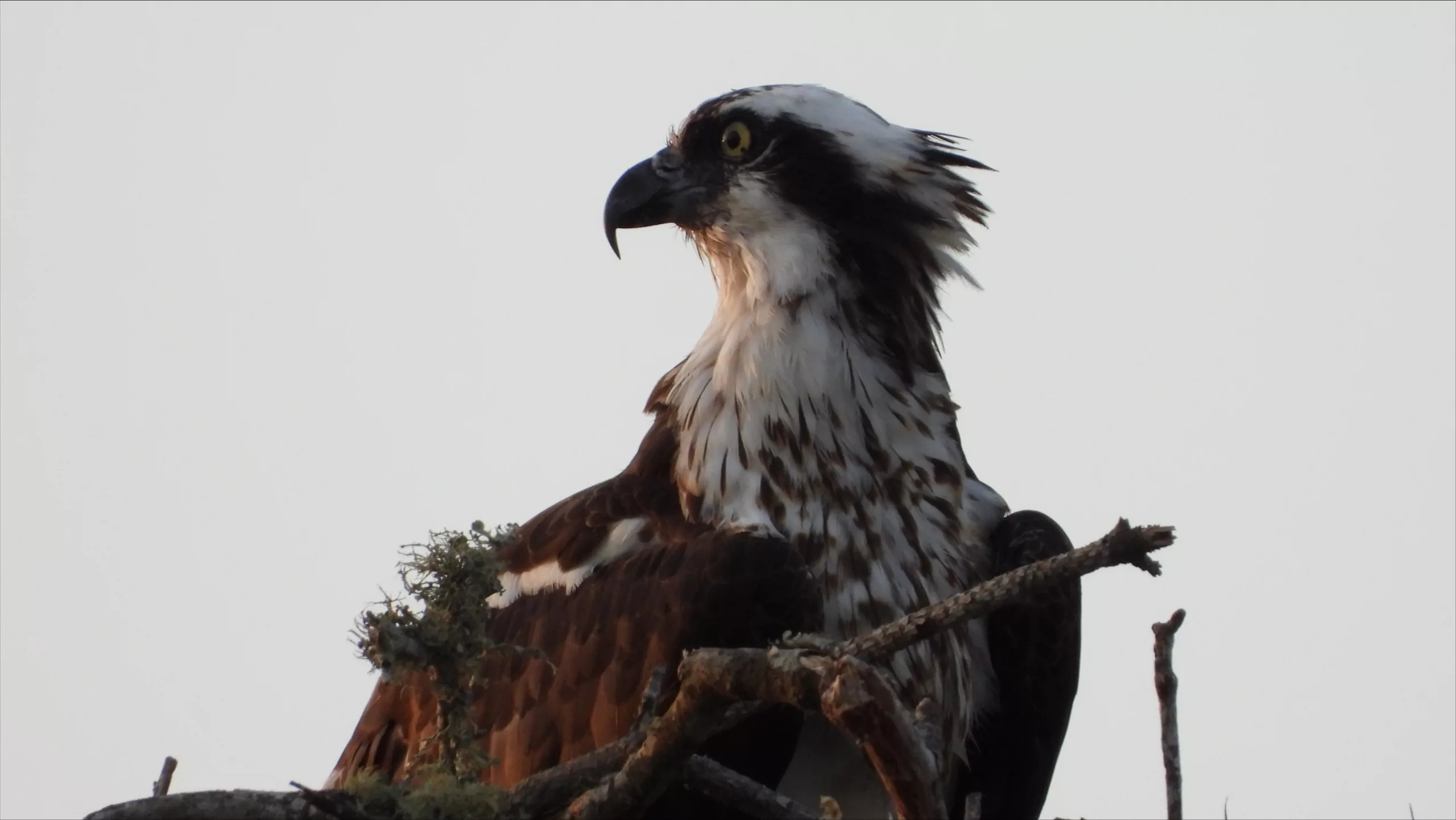Field Guide: Our Local Lovebirds

by Morgan Hooks, Environmental Content Creator
Winter is the season of love; from the holidays to Valentine’s Day, we are often at our most affectionate, most giving, and most romantic. That applies, too, to many of our wild neighbors who are preparing their best breeding plumage for courtship, mating, and raising their offspring with a new mate, or their lifelong one. Love is in the air, and it’s, also, flying in the air! Let’s learn a little more about what that looks like for a few of our common nesting species.
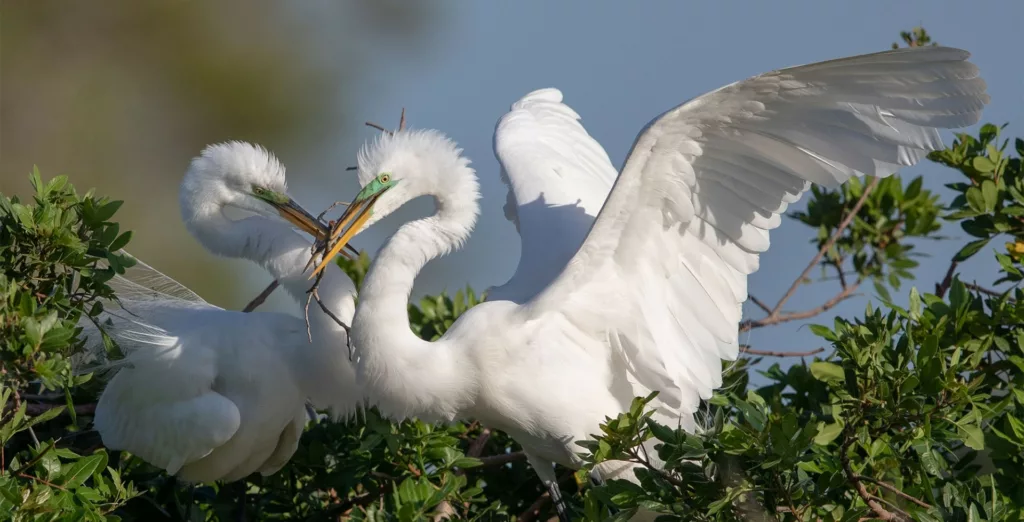
Great egret (Ardea alba)
Great egrets are one of our most recognizable wading birds, with long, flexible necks extending from behind the cordgrass in Bald Head Creek and clean, crisp white feathers contrasting against the trees at the Wildlife Overlook. During breeding season, Great egrets heighten their elegance with wispy aigrettes, or plumes, on their back feathers and electric lime green lining their eyes. Dressed to impress, the males select a nesting area and carefully craft a nesting platform. Once complete, they display to nearby females by calling and raising and lowering their long bodies in an S-shape, their plumes dancing behind them as they move. Once they have piqued a female’s interest, the mates take flight in unison, completing a circular display of courtship in the air. Great egrets are seasonally monogamous, selecting only one mate per nesting season and sharing the responsibility of raising the young. Great egrets typically nest high above water, from 10 feet in trees or shrubs to 90 feet in tall cypresses. They yield between one and six eggs.
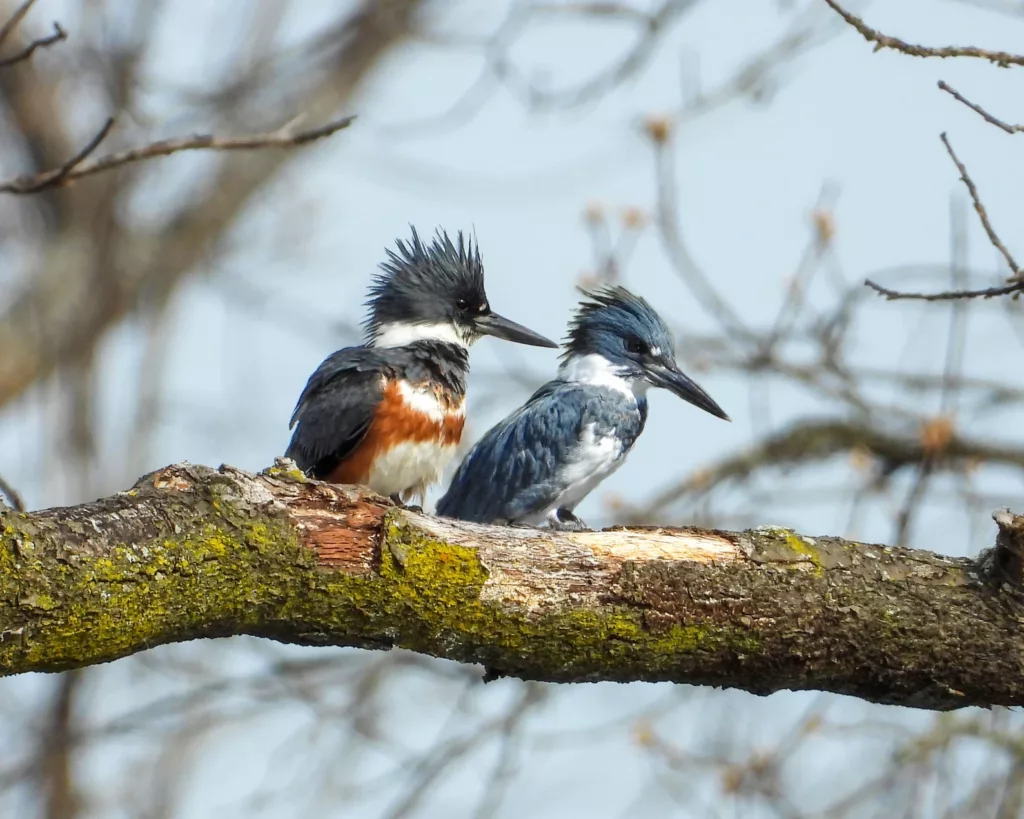
Belted kingfisher (Megaceryle alcyon)
You may yet to have spotted an elusive Belted kingfisher, but you have certainly heard one weaving through creek channels, rattling passionately as they go. Belted kingfishers are small but mighty; they have short, stumpy legs and stocky bodies, and big, crested heads and sharp beaks. Belted kingfishers are confident and territorial, and even more-so during breeding season. As one of few species whose female is more brightly colored than the male, these birds rely on actions rather than accessories. In the spring, the male begins to defend his half-mile waterside territory for his lucky lady, and aggressively at that. Males then prefer to take their mate out to dinner first, bringing her a fresh catch and feeding it to her directly. When the female has gained interest, they court through a noisy, high-speed aerial chase. Belted kingfishers are another seasonally monogamous species, selecting only one mate per nesting season and sharing the responsibility of raising the young. Both birds take part in digging the nest, a burrow at the bottom of a three-to-six foot tunnel decorated with nothing but the remains of their prized fish. They yield between five and eight eggs.
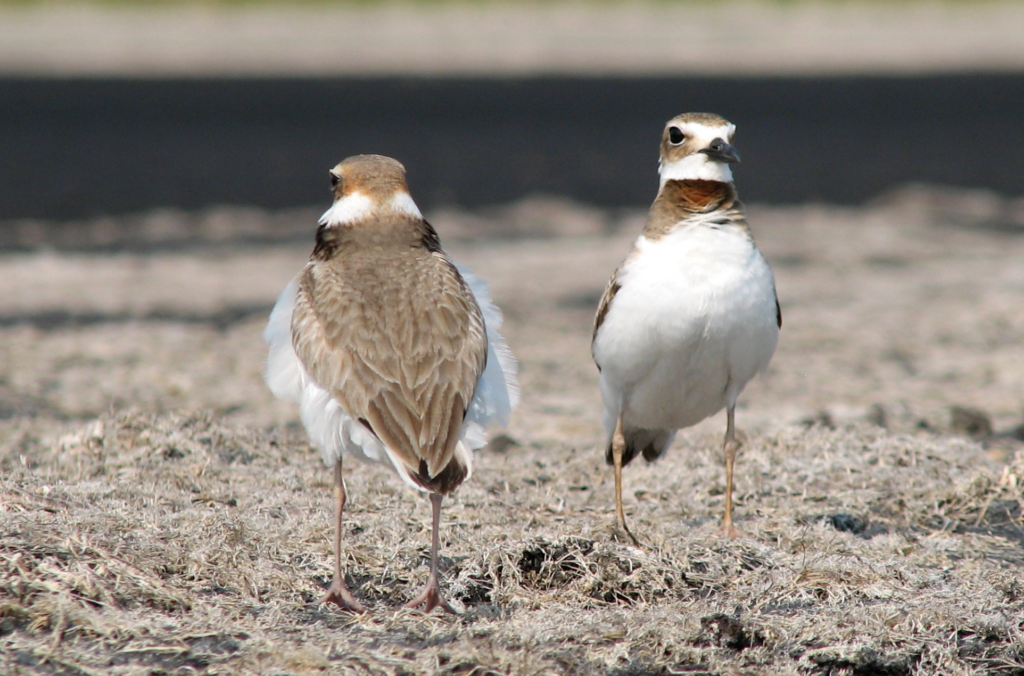
Wilson’s plover (Charadrius wilsonia)
A returning visitor to the island, the Wilson’s plover, is a small shorebird with dark neck rings and an oversized bill made for heftier catches than your average plover. With sandy coloration, the Wilson’s plover is a master of disguise, blending in with the dune ridge as they zoom across the sand, pausing at any chance to peck a critter underneath. During breeding season, the male’s neck rings darken from a pale brown to a striking black. Plumage perfected, the male ritually creates nest-scapes on the driest area of the beach, opting for a bit of privacy behind driftwood or vegetation. The males like to give their lady options, and will create several scapes for the female’s choosing, designed with shells, grass, or pebbles. Once he has selected his mate, the male postures near her with dropped wings, a low, spread tail, and rapid pattering with his feet, a gentler approach to a horizontal territorial display he will give to passerby birds later. These plovers choose to nest in colonies or, for us typically, in isolated pairs. Wilson’s plovers are another seasonally monogamous species, selecting only one mate per nesting season and sharing the responsibility of defending the nest and raising the young. They yield between two and four eggs.
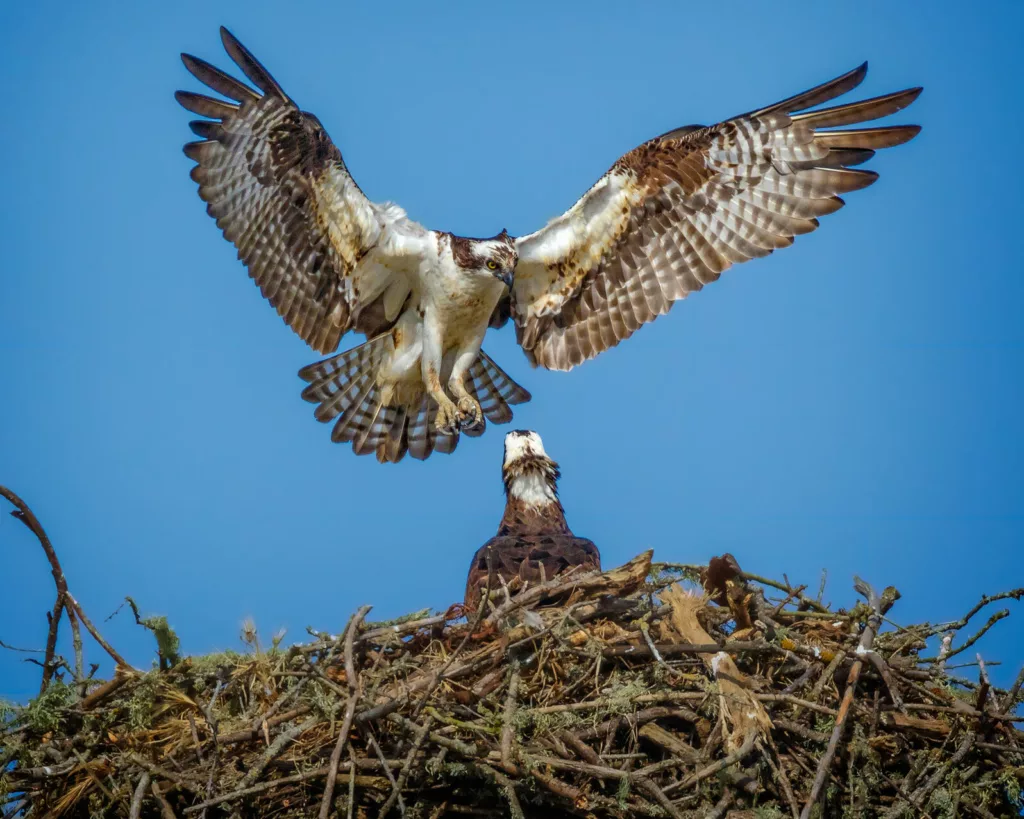
Osprey (Pandion haliaetus)
On Bald Head Island, the return of the Osprey from their winter homes in the far south can be seen as a sign of the coming of spring. A one-of-a-kind bird of prey, the Osprey is a formidable fish-hawk who can be seen hovering in their signature M-shape above the coast or diving talons-first into the marsh for a fresh catch. Birds of prey begin nesting preparations early, and there’s typically a lot of TLC to be done. First time nesters will create a relatively small nest by the waterfront on top of a dead tree or artificial platform. Ospreys are monogamous, often mating for-life and returning to the same nest year after year; after adding adjustments to the nest for generations, it can grow to ten-to-thirteen feet deep and three-to-six feet in diameter. Once renovations have been made to the nest from twigs to full branches, the male flies high above the nesting site, carrying a gift for his mate in the form of a fish or a stick. Here, he sits for a period of time, signaling with his sweet, high-pitched scream, before diving down repeatedly near the nest. After noticing his display of affection, the female will meet him in the air, where they will circle high together, often grasping talons as they go. Mates share the responsibility of guarding the nest and raising the young, with the male often taking on the responsibility of hunting and preparing the feasts for the offspring. They yield between two and four eggs.
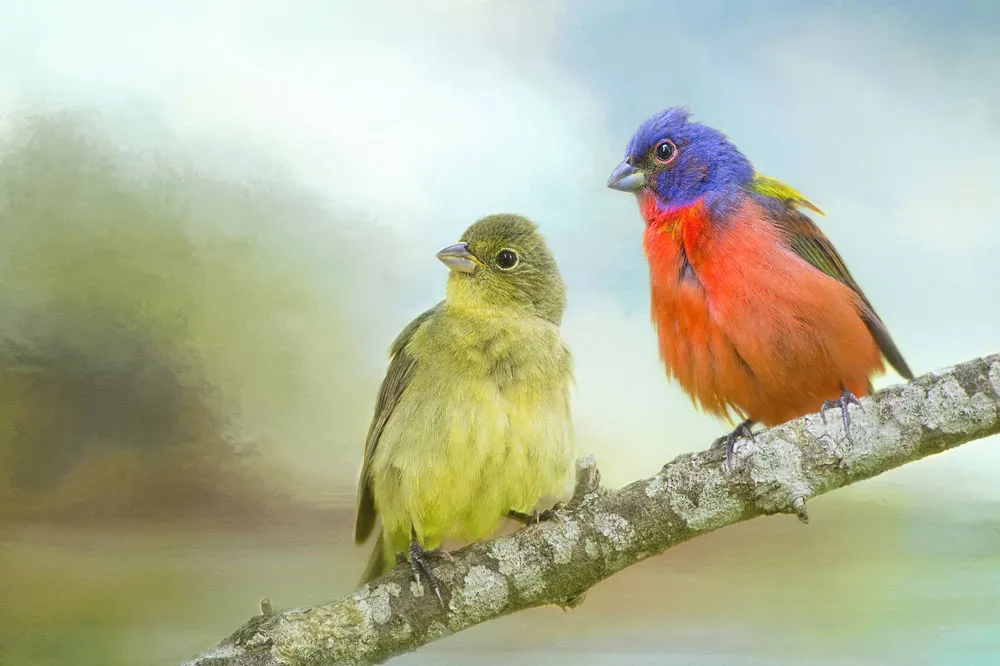
Painted bunting (Passerina ciris)
Another tell-tale sign of spring for the island isn’t just the bloom of color from the flowers, but from the vibrant Painted bunting. Painted buntings are secretive, staying low in dense cover in the maritime forest, as their bright, warbled songs tease you as they fly from cover to cover. One of the most unmistakable songbirds, the male Painted bunting sports a cobalt blue head, green back, and rich red belly during breeding season; despite their small size, this plumage indicates to other birds that the Painted bunting is a dominant, strong bird. To defend his nesting territory, the male will sit on a perch in the foliage, singing to the rest of the treetops, but he also isn’t shy to pull feathers from another bird in his boundaries. The male will go to great lengths to prove himself to his prospective mate, trying a handful of displays including spreading his feathers like a tiny Wild turkey. The female covers the construction, building a cup nest out of grass, forest litter, and animal hair close to the ground in dense bushes. Painted buntings are mostly seasonally monogamous, sometimes multi-seasonally, but the male may also occasionally invite a second female to nest on his territory. They yield three to five eggs.
Still curious about avian courtship? You can learn more at audubon.org/bird-guide and allaboutbirds.org. All information sourced from National Audubon Society and Cornell Lab of Ornithology.
Location: P.O. Box 3109, 700 Federal Rd. Bald Head Island, North Carolina 28461 EIN#: 58-1574496
Phone: Office: (910)-457-0089
Email: info@bhic.org
Hours:
- Monday9AM - 5PM
- Tuesday9AM - 5PM
- Wednesday9AM - 5PM
- Thursday9AM - 5PM
- Friday9AM - 5PM
- Saturday9AM - 5PM
- Sunday9AM - 5PM
